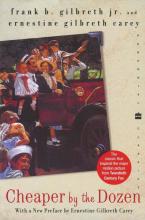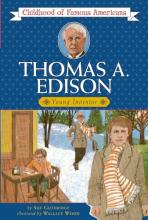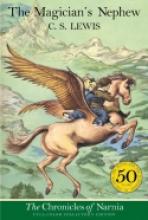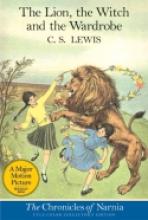No name
Catholic Heritage Curricula Lesson Plans: Third Grade - Supplements
The supplements are carefully woven into the third grade lesson assignments, but for those who prefer not to use the lesson plans the supplements alone could easily be used for enrichment and would make purchasing the plans worthwhile. For example the book report supplements contain clear guidelines for helping young students write book reports, a checklist to help the student in their efforts, creative ideas for written reports or oral reports and hands-on project reporting. There are over 20 beautifully illustrated forms to be used for writing the reports or keeping track of books that have been read. These are not the normal squares and circle forms on the market, but are ruled pages containing illustrated borders depicting Victorian, Catholic and nature scene which would appeal to the eyes of both children and adults. Book report books comparable in length sell for about $6.99.
In addition to the book report supplement, the plans include a series of reading comprehension pages. Once again the pages are visually attractive to the student and they focus on questions designed to encourage beginning literary analysis as well as the usual comprehension type questions. These pages are based on three outstanding books: Catholic Tales for Boys and Girls, More Catholic Tales for Boys and Girls, The Little Apostle on Crutches. Almost 50 pages in length, this supplement is comparable to workbooks that sell for about $8.99 with the added feature that they are Catholic and clever in their design.
"At the Feet of Mary: Holy Rosary Project." is the most beautiful introduction to the rosary that I have seen. It is designed as a hands-on project to bring the faith to life. Each week the child focuses on a different mystery through discussion, readings from a lovely description of a child's trip to shrines, the coloring of gorgeous illustrations that form part of a prayer book and meditations that are clearly explained. The prayer book that the child makes includes illustrations that will touch the heart of a child because they depict the Mysteries as seen through the eyes of a child. At the end of this 5 week project the child has produced a gorgeous prayer book. This supplement is 65 pages long and nothing on the market even remotely compares to the depth and beauty found in this project, but books on meditating, understanding the rosary and illustrations on the rosary combined would stand at about $15.95.
The fourth supplement focuses on geography and is entitled "Tour a Country." It includes both a general plan for the study of any country, as well as nine sets of four week plans for studying specific countries. (i.e., 36 week course covering nine specific countries.) The instructions are easy to follow and have a Catholic world view. The pages themselves are beautifully illustrated and the activity pages are sure to please the children. We have been using a "Countries of the World" activity book that cost $15.99, but will be switching to the "Tour a Country" supplement as the activities are more interesting and the study approach is more focused and logical as well as Catholic.
Finally, there are: monthly planners and certificates which could be used for any grade or program; thirty pages devoted to the teaching of third grade which answers home schooling questions as well as teaching independence; a dozen pages of memory gems and how to use them; illustrated chore and virtue charts Similar books covering home schooling helps, charts and poetry together would cost at least $12.99 If one were to buy books that covered the material contained in each of the four supplements the cost would be over $50.00 but the books wouldn't be Catholic in approach or presented in a way that allows the home school mother to efficiently teach the subject. For the family that home schools using material other then those published by CHC it is clear that the supplements alone make the plans well worth the price. You won't be disappointed. (365 pages of lesson plans and supplements cost $38.95 from CHC)
CHC Lesson Plans: Fourth Grade
The overall format of these lesson plans is very similar to the 3rd grade lesson plans. Basic texts for core subjects are: Saxon Math 5/4, God's Little Angels, Rare Catholic Stories and Poems, My Catholic Speller Level C, Language of God Level C, Faith and Life 4, A Year with God, My Temple of the Holy Spirit (included in appendices), Catholic Boys and Girls Health, Everyday Science Sourcebook, Our United States (included in appendices)and 1001 Facts for Your Catholic Geography Bee. Texts used for enrichment (that are included in the Lesson Plans) are: Catholic Math Activities, Cardinal Reader Book 4, Praise Him With Your Very Life, Map Skills C, Learning to Appreciate Art (included in appendices), Art with a Purpose: Artpac 4, and Writing Can Help Book 4. Suggestions are made in the planning guide for additional subjects and electives (such as Latin and Home Economics) and the lesson plans leave room to add these yourself.
There are five appendices:
1. Writing Simplified: A 7 page outline of writing tips, instructions and resources by Nancy Nicholson.
2. My Temple of the Holy Spirit, a 102 page Catholic anatomy text by Katherine Rode, R.N. (click here for complete review)
3. Our United States is a 19 page American History/Geography outline integrated with 1001 Facts for Your Catholic Geography Bee and Let the Authors Speak. The plan includes nine weeks of State History with a day-by-day breakdown helping you cover the following topics with the help of research at your library and/or on the Internet: Exploration, Statehood, Early History, Catholic Foundations, Manufacturing, Agriculture, Natural Resources, Landmarks & Topography and "Grand Finale." The remaining weeks are six week segments on different regions of the United States including overviews of the region and the selection of five states from each region to study more in-depth. A day-by-day course-plan is offered which includes geography, climate, history, etc. Resources are offered for each region, including websites, videos, artwork, short stories and games.
4. Learning to Appreciate Art is a 56 page Catholic art resource that comes with 38 full-color art reproductions. Click here for full review
CHC Lesson Plan Guide: Middle School Years
I have just finished planning the school year for my 5th and 8th graders using the new CHC Lesson Plan Guide for the Middle School Years, and I have never had such a productive and enjoyable time of it! Normally, I like to plan, but there never seemed to be enough time or information in one place to do it effectively or efficiently. I prefer a customized curriculum for each of my students, emphasizing their particular interests while shoring up their weaker subjects. With six students alongside little ones, planning the school year's curriculum is a very time-consuming process. CHC has made all the difference for me this year.
The Lesson Plan Guide is just that–-a complete guide to designing your student's studies for each of the middle school (grades 5-8) years. There is structure within flexibility, and many options to appeal to a diversity of students with different gifts and talents. This is not a "school-in-a-box" that you can open and immediately put to work. You will need to spend a few hours for each grade level, looking over the courses that are detailed for you, and considering your student. But, this investment of a few hours will provide you, as the teacher, with a firm overview of the path you will take to meet the goals at the other end of the school year. Having that "big picture" helps tremendously when motivation lags. Using the CHC Lesson Planner (reviewed elsewhere) will simplify this customization further as they were designed to be used together.
Each of the four years is laid out with a plan for core subjects, non-core and elective subjects, enrichment materials, and parent resources. Sample schedules for each grade level are provided as an example of a balanced workload for a typical student. Unique to CHC are the Independent Study Charts that show the student which material he should be able to work on without direct teaching. Six detailed hands-on student courses are provided for up-to-date, beautiful Catholic textbooks in the areas of history, virtues, and Church history. As if that weren't enough value for the money, the Guide also offers wonderful teacher resources that provide the "what-you-need-to-know-to-teach" writing, science, and world history at these grade levels. Several authors contributed these resources, and the different approaches to these subjects are refreshing in their variety.
CHC has managed to produce a wonderful plan for middle-grade students that features the best characteristics that we have come to expect from them:
- do-able projects that the children both anticipate and cheerfully complete;
- a unique hands-on approach to most subjects that truly engage the student on several levels;
- an underlying structure that the teaching parent becomes familiar with as the year goes on;
- a progression in critical thinking, the ability to work independently for longer periods, and solid academics at a comfortable pace as the years pass.
This book contains:
Planning Guides:
- Fifth Grade: (18 pages)
- Sixth Grade: (18 pages)
- Seventh Grade: (18 pages)
- Eighth Grade: (20 pages)
- 5th Grade From Sea to Shining Sea Hands-On Study Guide (9 pages)
- 6th Grade All Ye Lands Hands-On Study Guide (9 pages)
- 7th Grade "The Virtue Tree" Student Course (44 pages)
- 7th Grade "Timeline of the Republic" Guide (19 pages)
- 8th Grade: 2000 Years of Christian History Study Guide (12 pages)
- 8th Grade: "Timeline of the Ages" (19 pages)
- "Jump Start Your Writing" (26 pages)
- "Science in a Nutshell" (24 pages)
- "World History Timeline" (46 pages)
Belles On Their Toes
This sequel to Cheaper by the Dozen is, if anything, even more hilarious. Both share a realism that only a true story can acquire. After Frank B. Gilbreth's death, his wife Lillian takes over his business as an efficiency engineer, traveling to conferences and teaching students in her home. The 11 Gilbreth children are growing up, and manage to find a hilarious situation in each new experiences. As usual, the Gilbreth family faces cigarettes, garden fertilizer, one piece bathing suits, and meetings with the president with equal aplomb and humor. This book is primarily the story of 'Mother', and the Gilbreths after their father's death. I recommend reading it after Cheaper By The Dozen for that reason. Both books contain examples of the prejudices and attitudes of the 'teens and 'twenties, and provide many opportunities for learning experiences.
Video/DVD: This book was made into a movie in 1952. It diverts more from the book than the Cheaper by the Dozen movie, and has taken the form of a musical. It is available on DVD.
Cheaper by the Dozen
It's the Jazz Age, roadsters are the rage, and an engineer in Massachusetts is raising a vibrant family of 12 children. Welcome to the world of the Gilbreths, where everything comes 'cheaper by the dozen'.
Frank B. Gilbreth originated the science of 'motion study', to improve efficiency. He and his wife Lillian collaborated happily on books, factory layouts, and their large family. This book is essentially a family biography written by two of the Gilbreth children. Uproariously funny for families of any size, Cheaper By The Dozen will be particularly fun for homeschoolers to read. Mr. Gilbreth takes an active part in the children's education; painting glow-in-the-dark constellations on the ceiling and playing foreign language records during 'unavoidable delay' in the bathroom. Nuisance boyfriends, tonsil removal, and new babies are mundane occurrences at the Gilbreth home, and Father uses every event to teach science, and efficiency. The results are predictably hilarious.
Poignant, memorably funny, and always realistic, Cheaper By The Dozen can be read out loud or on its own. It is a genuine experience of life in the early 1900's, with all the attitudes and prejudices of that era, and will be a learning experience for your whole family.
Note: There is an instance of profanity in Chapter 2 which can easily be edited by a proofreading parent.
Video/DVD: This book was made into a movie in 1950 and is one of our family's favorites – a real classic. It is available on DVD.
Thomas A. Edison: Young Inventor
This is a fascinating and often humorous story of one of the most renowned inventors of all time. As a boy, Edison was fascinated by the world around him and full of questions about everything. Although he had many mentors as a boy, his first grade teacher reacted so negatively to his natural curiosity that his mother took him out of school and taught him at home. His adventures involving chemistry, trains and printing newspapers make for enjoyable and interesting reading. Edison was clearly a boy of creativity and ingenuity and a positive role model for children of today in sharing Edison's scientific interests and natural curiosity. My six year old boy, in particular, was completely enthralled when we read this story aloud.
Copyrights 1947/1959. Several later printings.
The Chronicles of Narnia
The Magician's Nephew
At first glance, this is a story of magic, drama and journeying to other worlds. Digory and his friend Polly, who live in London in the early part of the 20th century, accidentally discover some weird experiments being performed by Digory's Uncle. Too cowardly to test out his own experiments, he sends them off unwillingly to an adventure in an unknown world.
They find themselves in an enchanted place - a "wood between the worlds" - a quiet, peaceful place filled with trees and pools of water. They soon discover that each pool will take them into a different "world." When they decide to explore one of these worlds, their real adventure begins - and they're in for a wild ride.
The story is, primarily, about the founding of a new world - Narnia. The two children witness its creation and its initial struggles with evil - not unlike those of our own world. Naturally, it presents some of the history that leads up to the Lion, the Witch and the Wardrobe as well.
Like the Lion, the Witch and the Wardrobe, children need not be fully aware of the story's allegorical significance in order to enjoy and benefit from the story. On a simpler level, the story highlights truths about character and consequences that will remain with them for a lifetime.
The Lion, the Witch and the Wardrobe
Four British children - Peter, Susan, Edmund, and Lucy, are taken to the country to live with an old Professor during World War II, as London was quite unsafe for children. The professor is somewhat eccentric, but kind, and permits them to explore his large estate. While hiding in an old wardrobe, the youngest, Lucy, is amazed to discover that there is no back to the wardrobe - as she pushes past more and more coats, they become scratchier and colder and she begins to realize that she's no longer in a wardrobe. She's in the middle of a snowy forest. Lucy has discovered a strange, unknown world where amazing adventures await her and her siblings.
Long beloved by children the world over, this is a tale of innocence, difficult lessons learned, adventure, friendship and love. Underneath and not immediately apparent to children is an allegory. Some truths about our own world can be seen more clearly through a story that takes place elsewhere.
Narnia is in the grip of the White Witch. Although she promises happiness and delightful things, those who follow her are miserable, and the entire land is immersed in an eternal winter - always winter and without Christmas. The mysterious Aslan, a lion who is greatly feared by the witch, comes to Narnia and things begin to change.
Most parents will quickly realize that Aslan is a figure for Christ who saved the world from the tyranny of sin and death (represented by the witch). There are many interesting details that correspond with this allegory. Although I read the series many times as a child, I wasn't fully aware of the allegorical significance until much later. I wouldn't spoil it for children by sitting down and explaining it to them. The Christian allegory will probably be more meaningful if they are permitted to discover it for themselves.
The story (as well as others in the series) is appropriate as a read-aloud even for rather young children and is written at a mid-grade-school reading level. (Strong readers may be interested in tackling it even earlier.) The book is most powerful, I think, when it can be first introduced in the very simple way that young children enjoy such a book.








